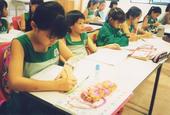Why Singapore’s English Teachers Should Embrace Singlish, Not Fight It
Is it time for Singaporean educators to embrace Singlish as a legitimate learning tool? What the Research […]
Read More
From January 1999 to December 2004, Singapore joined with researchers from 16 countries across the globe to work on the International Project on Mathematical Attainment (IPMA). These researchers, from China and Brazil, Estonia and England, among others, were united by a single goal: to recommend good practices in the teaching and learning of Maths at an international level.
 The aim of this longitudinal project was to monitor the mathematical progress of pupils from their first year in primary school in order to determine the various factors that affect this progress. In Singapore, a total of 856 pupils from 3 schools participated in the study. They were drawn from the 1999 cohort of Primary 1 pupils.
The aim of this longitudinal project was to monitor the mathematical progress of pupils from their first year in primary school in order to determine the various factors that affect this progress. In Singapore, a total of 856 pupils from 3 schools participated in the study. They were drawn from the 1999 cohort of Primary 1 pupils.
Researchers followed their progress throughout the 5-year duration of the project.
All the tests used in this study were constructed by the IPMA team, based in the Centre for Innovation in Mathematics Teaching at the University of Exeter. The pupils were not told that they would be tested and therefore did not prepare for them in any way.
Based on test results during their first year of school, as well as records of the preschools these students attended, it was found that:
Singapore children generally enter Primary 1 with considerable knowledge in arithmetic. They are able to count to 20, distinguish among common shapes, and complete simple number sentences involving addition and subtraction within 20. They also tend to use finger-counting for calculation purposes. The 2-3 years of preschool education seem to give these children a head start.
There was insufficient evidence to conclude if the type of preschool affects student performance in Maths at the beginning of Primary 1. As there were greater differences among primary schools, than among preschool types within the same school, variation in performance may be caused by other factors such as the school’s locality, social economic status, family support, and so forth.
From the results of the tests administered between Primary 2 to 5, it was found that:
Although the current primary Maths curriculum is well-structured and generally well-learned by most students, it would be useful to develop an alternative curriculum catering to students with differing mathematical abilities.
For students with low ability, the current EM3 practice of reviewing topics taught in Primary 1 to 4 at a slower pace in Primary 5 and 6, often using drill and practice, is inadequate. There is an urgency to develop a more innovative hands-on pedagogy that promotes understanding.
For students with high mathematical ability, teachers should offer enrichment activities with more depth and breadth for them to stretch their abilities.
The instruction of Maths in local primary schools can be further enhanced in several ways:
This study sheds light on some of the strengths and weaknesses of Maths education in our primary schools. Singapore’s Maths curriculum depends on five interrelated components to develop students’ problem-solving ability: concepts, skills, attitudes, metacognition and processes. While most of the students in the study have acquired the basic concepts and skills for mathematical problem solving, we need to consider other components to make learning Maths a meaningful and lifelong endeavour.
Acknowledgements
This project was funded by the Academic Research Fund, National Institute of Education, Singapore (RP 21/98 BK) and the University of Exeter.